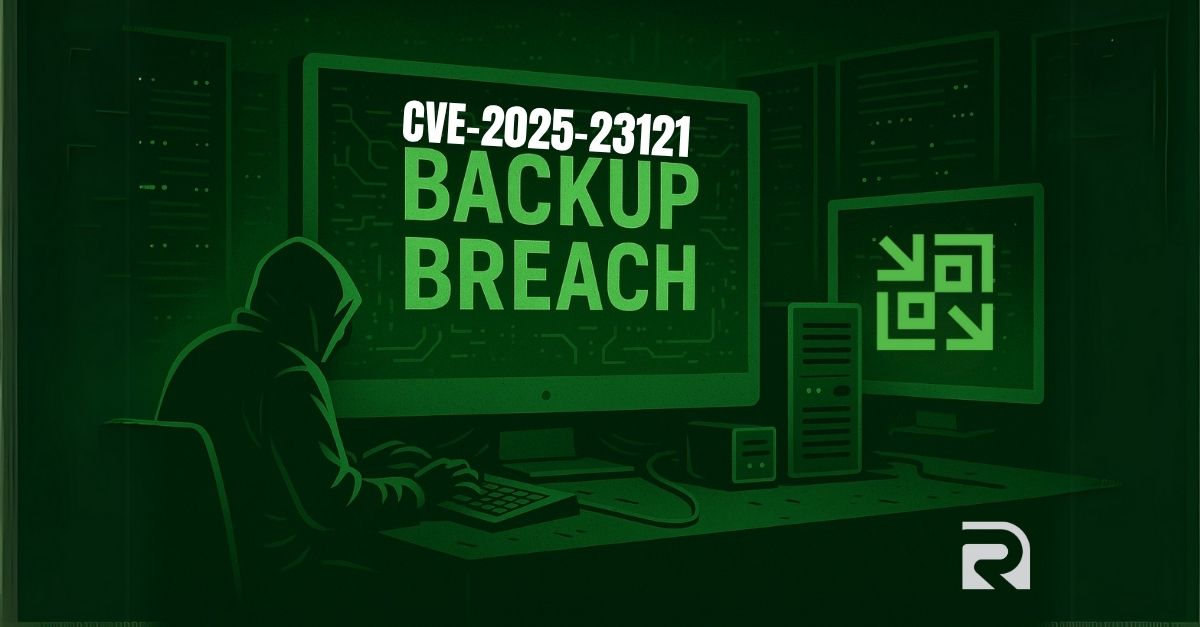CVE-2025-23121: Critical Veeam RCE

Date disclosed: June 17, 2025
CVSS score: 9.9 (Critical)
Affected software: Veeam Backup & Replication 12.3.1.1139 and earlier
Attack vector: Authenticated remote domain user
Patched in: Version 12.3.2 (build 12.3.2.3617)
Introduction
A new Remote Code Execution (RCE) vulnerability in Veeam Backup & Replication—CVE-2025-23121—has drawn attention across the cybersecurity community. With a critical CVSS score of 9.9, this vulnerability allows any authenticated domain user to gain remote execution access to Veeam servers that are domain-joined—a common deployment scenario in mid-to-large organizations.
Veeam is a core component of backup and disaster recovery strategies in thousands of enterprise environments. If compromised, it becomes the perfect point of leverage for attackers to cripple an organization’s ability to recover from any major incident, including ransomware.
Technical Overview: How CVE-2025-23121 Works
While the exact exploit code is not public, Veeam’s security advisory and reverse engineering community consensus suggests the vulnerability stems from improper access validation when handling RPC (Remote Procedure Call) requests inside the backup service management engine.
Conditions Required for Exploitation:
- The Veeam Backup Server must be domain-joined.
- The attacker must have valid AD credentials, but no elevated privileges are required.
- The service endpoint allows unsanitized input to be interpreted as executable code.
This allows any low-privilege domain user to achieve arbitrary code execution with SYSTEM-level privileges on the host machine.
Why Domain-Joined Veeam Servers Are at the Heart of the Risk
Most organizations deploy Veeam in domain-joined mode for ease of policy integration and centralized access. However, this makes Veeam servers implicitly trusted by the rest of the environment—an architectural liability when a vulnerability like CVE-2025-23121 surfaces.
Attackers gaining code execution on a domain-joined backup server can:
- Dump credentials from LSASS or AD-integrated agents
- Disable backup jobs or delete restore points
- Plant ransomware or establish persistence
- Restore sensitive file sets to unauthorized destinations
Why This Is More Dangerous Than a Regular RCE
Unlike RCEs in public-facing apps, a backup server compromise strikes at the core of operational resilience. If backups can’t be trusted, restored, or even found, then the business is flying blind in the event of an attack.
Veeam is often the last line of defense. If the attacker disarms this, they own the recovery path before launching a broader attack.
Real-World Attack Scenario
A possible threat chain using CVE-2025-23121:
- A phishing attack captures domain credentials from a low-level user.
- The attacker sends a malicious authenticated RPC request to the Veeam server.
- Arbitrary code execution is achieved with SYSTEM privileges.
- Backups are silently deleted, or restore jobs are corrupted.
- Days later, ransomware hits production systems. Recovery fails.
Security and Business Impact
Security Implications
- Compromise of privileged credentials
- Use of backup system for lateral movement
- Inability to detect or recover from attacks
Business Implications
- Regulatory non-compliance (GDPR, HIPAA, SOX)
- Extended downtime due to unusable backups
- Potential denial of insurance claims
Related Vulnerabilities
- CVE-2025-24286: Backup Operators can modify jobs to execute code (CVSS 7.2)
- CVE-2025-24287: Local privilege escalation in Veeam Agent for Windows (CVSS 6.1)
Recommended Actions
- Patch immediately to Veeam 12.3.2 (build 12.3.2.3617)
- Reassess domain joining: use local auth or separate forest if possible
- Audit access logs and user behavior for anomalies
- Test backup integrity and restore simulations
- Harden your Veeam environment with EDR, segmentation, and logging
Conclusion
CVE-2025-23121 is not just a technical vulnerability—it is a strategic weakness. Backup systems must be treated as tier-0 infrastructure. The time to patch and harden your environment is now. Attackers are already looking for systems that haven’t.
